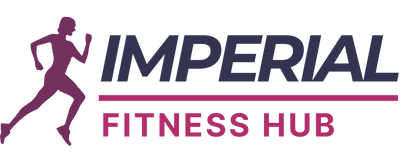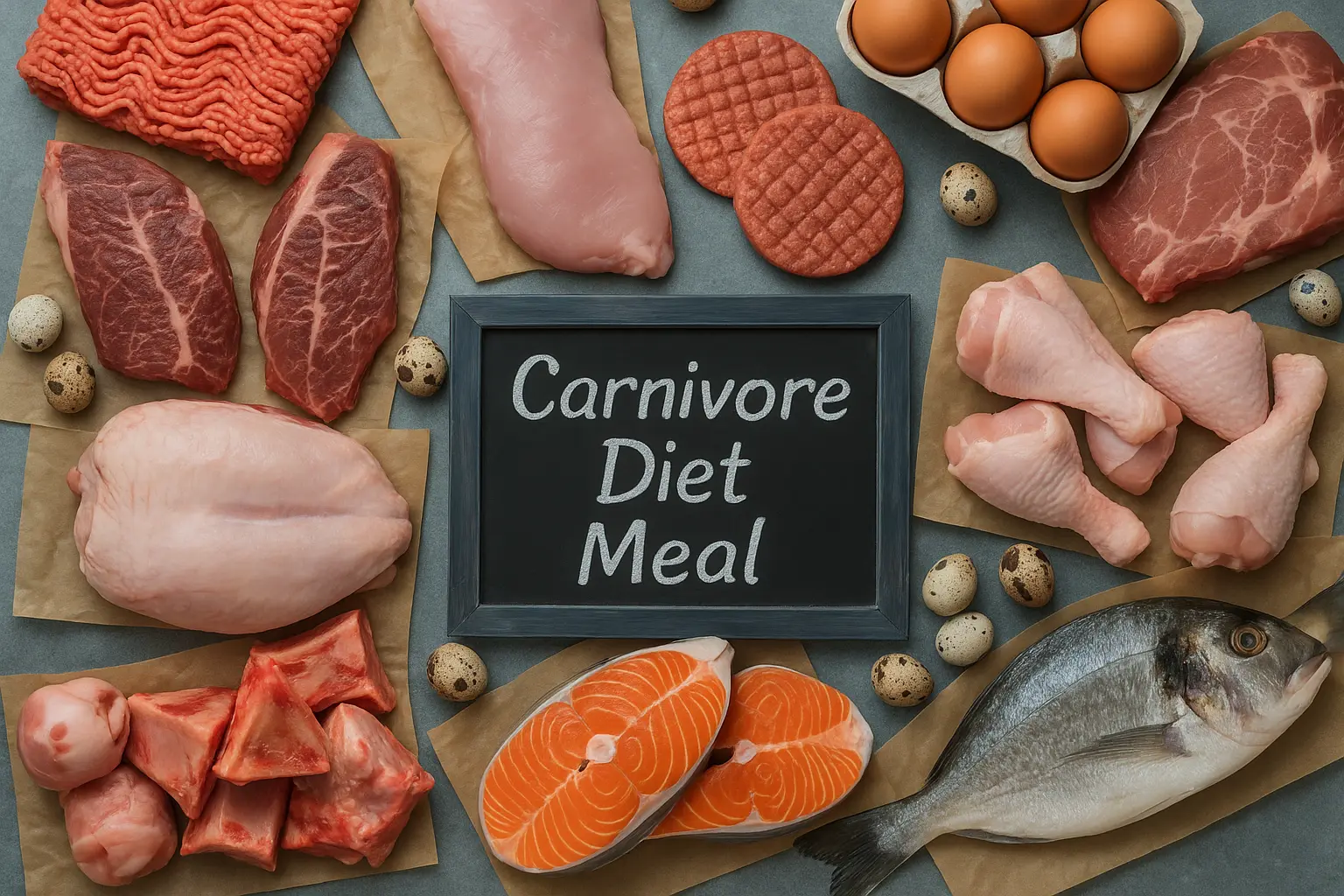Introduction
The carnivore diet has gained massive attention in recent years. From fitness influencers to everyday people, many are experimenting with this all-meat lifestyle. Carnivore diet meals focus solely on animal-based foods, such as beef, chicken, fish, and eggs, eliminating carbs completely. Supporters claim it helps with weight loss, inflammation, and mental clarity. Critics argue it is restrictive and risky. In this guide, we’ll cover what the carnivore diet meal plan includes, its benefits, risks, and even a 7-day carnivore diet meal plan for beginners.
Table of Contents
What Is the Carnivore Diet?
The carnivore diet is one of the most restrictive eating patterns in the world. It’s built on a single rule: you eat only animal-based foods and completely eliminate everything else. That means your plate will only have meat, fish, eggs, and small amounts of low-lactose dairy products, such as hard cheese, butter, or heavy cream. Fruits, vegetables, grains, legumes, nuts, seeds, and even most plant-based oils are strictly off-limits.
Unlike balanced diets that encourage a mix of food groups, the carnivore diet takes a zero-carb approach. Proponents argue that our ancestors primarily survived on meat and fish, and that modern health issues such as obesity, diabetes, and chronic inflammation are linked to carbohydrate-rich diets. This plan is sometimes referred to as an “all-meat diet” or “zero-carb diet” because its main aim is to cut carbohydrates entirely and rely on fat and protein as the body’s fuel.
At its core, the carnivore diet flips conventional nutrition advice upside down. Instead of focusing on plant-based nutrients, it doubles down on the idea that fats and proteins are the only essential macronutrients, while carbohydrates are not necessary for survival. Advocates believe that by removing carbs, the body shifts into ketosis — a state where it burns fat for energy — resulting in weight loss, stable blood sugar, and, in their view, improved overall health.
How Does the Carnivore Diet Work?
The carnivore diet works by removing carbohydrates completely and forcing the body to find a new fuel source. Normally, your body uses glucose (from carbs) for energy. When you cut carbs, glucose levels drop, and your body switches to burning fat for energy. This process is called ketosis, where fats are converted into ketones, providing steady energy throughout the day.
By eating only animal-based foods, a carnivore diet provides high amounts of protein and fat. High Protein helps with muscle repair and keeps you full, while fat becomes your body’s main energy source. Many beginners notice that they feel satisfied with just two or three carnivore diet meals per day because of this satiety effect.
Another key change is in hormones. Cutting carbs lowers insulin levels, which promotes fat burning. At the same time, the higher fat intake may support testosterone production and better hormonal balance. Supporters also report mental clarity, fewer cravings, and more consistent energy since there are no sugar spikes and crashes.
Carnivore Diet Food List (What You Can Eat)
One of the reasons many people find the carnivore diet simple is that the food list is short and straightforward. If it comes from an animal, it’s generally allowed. The focus is on meat, fish, eggs, and limited dairy—foods rich in protein and fat that fuel your body when carbs are eliminated.
1. Meat (Main Source of Calories)
- Beef: ribeye, sirloin, ground beef, chuck roast, brisket, steaks (T-bone, porterhouse, New York strip)
- Pork: pork chops, pork belly, pork ribs, bacon (preferably sugar-free)
- Lamb: lamb chops, lamb shanks, ground lamb
- Poultry: chicken thighs, wings, drumsticks, turkey, duck
2. Fish and Seafood
- Fatty fish: salmon, sardines, mackerel, trout
- Shellfish: shrimp, scallops, crab, lobster, clams, mussels, oysters
3. Organ Meats (Nutrient-Dense Options)
- Liver, kidney, heart, tongue, oxtail, and bone marrow
These are packed with vitamins B12, iron, and small amounts of vitamin C that aren’t found in muscle meat.
4. Eggs
- Whole eggs from chicken, duck, or quail
Eggs provide the perfect ratio of protein, fats, and essential nutrients—earning them the nickname “nature’s multivitamin.”
5. Dairy (Optional & Low-Lactose Only)
- Hard cheeses (cheddar, parmesan)
- Heavy cream
- Butter or ghee
Some carnivore followers limit dairy due to lactose sensitivity, but small amounts of aged or fermented dairy can fit in.
6. Animal Fats for Cooking
- Beef tallow, lard, duck fat, butter, ghee
These fats replace vegetable oils and are used for cooking or adding flavor.
7. Extras (Minimal Seasoning Allowed)
- Salt and pepper are staples.
- Some followers include garlic powder, onion powder, or zero-carb hot sauces, though purists avoid all plant-based spices.
If it’s an animal product, it’s on the list. The more natural and fatty the cut, the better it supports your energy needs.
Foods to Avoid on the Carnivore Diet
The carnivore diet is one of the most restrictive eating patterns, and knowing what not to eat is just as important as knowing what you can eat. The rule is simple: if it doesn’t come directly from an animal, it’s off the table. Here’s a breakdown of foods to avoid:
1. Fruits and Vegetables
- All plant-based foods are excluded: apples, bananas, berries, tomatoes, potatoes, leafy greens, and even vegetable broths.
- This also means no smoothies, juices, or salads.
2. Grains and Legumes
- Rice, wheat, oats, pasta, bread, and tortillas are completely restricted.
- Beans, lentils, chickpeas, and peas are not allowed.
3. Nuts and Seeds
- Almonds, peanuts, chia seeds, flax seeds, sunflower seeds, and all nut butters are cut out.
4. Sugars and Processed Foods
- Refined sugar, honey, maple syrup, and artificial sweeteners are banned.
- Processed foods with additives, MSG, nitrates, or preservatives are not allowed.
5. Most Dairy Products
- High-lactose foods like milk, yogurt, and soft cheeses are discouraged.
- Only small amounts of aged, low-lactose cheeses or butter may be included if tolerated.
6. Beverages
- Coffee, tea, soda, fruit juices, alcohol, and plant-based milks are excluded.
- The diet focuses solely on water and bone broth.
7. Plant Oils and Sauces
- Vegetable oils like canola, soybean, corn, sunflower, and olive oil are not allowed.
- Store-bought sauces and dressings (which usually contain sugar, starch, or vegetable oils) are also restricted.
The strictness of these rules is what makes the carnivore diet controversial. While cutting carbs may bring short-term weight loss, eliminating all plant foods also means losing out on fiber, antioxidants, and essential vitamins found only in plants.
Carnivore Diet 7-Day Meal Plan
If you’re new to the carnivore diet, having a structured 7-day meal plan makes the transition easier. This plan keeps things simple, satisfying, and focused on nutrient-rich animal foods that serve as staple foods for your body. You can swap meals depending on preference, but the key is sticking to fatty cuts of meat, eggs, fish, and minimal dairy.
Day 1
- Breakfast: Ribeye steak with scrambled eggs
- Lunch: Grilled salmon with bacon
- Snack: Hard-boiled eggs
- Dinner: Ground beef patties cooked in butter
Day 2
- Breakfast: Omelet with cheddar cheese and bacon
- Lunch: Chicken thighs roasted in tallow
- Snack: Pork rinds or jerky (sugar-free)
- Dinner: Pan-seared lamb chops
Day 3
- Breakfast: Bacon and fried eggs
- Lunch: Tuna steaks with shrimp
- Snack: Sardines
- Dinner: Bison burgers with bone marrow
Day 4
- Breakfast: Beef liver with scrambled eggs
- Lunch: Roasted chicken wings with butter
- Snack: Cheese cubes (low-lactose)
- Dinner: Pork ribs slow-cooked in fat
Day 5
- Breakfast: Salmon with eggs cooked in ghee
- Lunch: Turkey burgers with cheddar cheese
- Snack: Beef jerky
- Dinner: Grilled ribeye steak
Day 6
- Breakfast: Chicken livers with poached eggs
- Lunch: Pork chops seared in butter
- Snack: Sardines or smoked salmon
- Dinner: Lamb shanks slow-cooked in broth
Day 7
- Breakfast: Bacon and sunny-side-up eggs
- Lunch: Beef heart or ground beef patties
- Snack: Hard cheese or bone broth
- Dinner: Prime rib roast
Tip for Beginners: Drink plenty of water and consider bone broth for electrolytes. Many people also include salt generously to prevent fatigue during the adjustment phase.
Benefits of the Carnivore Diet
The carnivore diet has gained popularity because many people report quick results, especially in the early stages. While scientific research is still limited, here are some commonly cited benefits of following a carnivore diet:
1. Weight Loss
By cutting out all carbohydrates, your body shifts into a fat-burning state. The high protein and fat content also keeps you feeling full for longer, naturally reducing calorie intake without the need for portion control.
2. Reduced Inflammation
Followers claim that eliminating processed foods, sugars, and vegetable oils leads to less joint pain, fewer digestive issues, and better skin health. Some also credit the diet with reducing autoimmune symptoms.
3. Increased Energy and Mental Clarity
Many report steady energy throughout the day without the crashes caused by carb-heavy meals. Running on ketones (fats used for energy) is believed to help mental focus and concentration.
4. Improved Blood Sugar Control
Since the diet removes all carbs, blood sugar spikes are eliminated. Some people with type 2 diabetes report improved blood sugar levels and reduced reliance on medication (though medical supervision is essential).
5. Hormonal Balance and Strength
A high intake of healthy fats and protein supports testosterone and other hormone production. This can improve strength, muscle growth, and recovery.
6. Simplicity
One of the biggest advantages is how straightforward it is. No calorie counting, no complex recipes—just meat, fish, eggs, and a bit of dairy if tolerated.
Note: While these benefits sound appealing, most of them are based on anecdotal experiences, not long-term clinical studies. More research is needed to confirm how sustainable and safe the carnivore diet truly is.
Risks and Downsides of the Carnivore Diet
While the carnivore diet can bring short-term benefits, it also comes with several serious risks that make it controversial among health experts. Here are the main downsides you should be aware of:
1. Nutrient Deficiencies
- By cutting out fruits, vegetables, grains, and legumes, you lose essential vitamins and minerals like Vitamin C, folate, potassium, and magnesium.
- Plant compounds such as antioxidants and phytonutrients, which protect against chronic diseases, are completely missing.
2. No Fiber for Gut Health
- Since fiber only comes from plants, the diet provides zero fiber.
- This can cause constipation, an imbalance of gut bacteria, and long-term digestive issues.
3. High in Saturated Fat and Sodium
- Depending on the cuts of meat chosen, the diet may be very high in saturated fats and cholesterol, which could raise LDL (“bad”) cholesterol.
- Eating processed meats like bacon and sausages also increases sodium intake, raising the risk of high blood pressure.
4. Possible Long-Term Health Risks
- Red and processed meats have been linked to higher risks of colon and rectal cancer.
- The absence of plant foods removes proven protective factors against heart disease, diabetes, and some cancers.
5. Adaptation Symptoms
- In the first few weeks, many experience “keto flu” symptoms like headaches, fatigue, nausea, and digestive changes as the body adapts to using fat for energy.
- Some also report diarrhea due to excess fat intake.
6. Not Suitable for Everyone
- Pregnant or breastfeeding women, children, and people with kidney disease, heart problems, or eating disorders should avoid this diet.
- It may also be unsafe for those sensitive to dietary cholesterol.
Expert Warning: Most dietitians consider the carnivore diet unsustainable long-term. While short-term use as an elimination diet may provide insights, following it for months or years can pose significant health risks.
Carnivore Diet Food List
The carnivore diet is built entirely on animal-based foods. While restrictive, it allows flexibility within meat, fish, eggs, and certain dairy products. Here’s a breakdown of what you can and cannot eat:
Foods You Can Eat
- Beef & Red Meat: Ribeye, sirloin, ground beef (80/20), brisket, chuck roast, flank steak, bison, venison.
- Pork: Pork chops, pork ribs, pork belly, pork shoulder, bacon (preferably sugar-free).
- Lamb & Game: Lamb chops, lamb shanks, goat, elk.
- Poultry: Chicken thighs, wings, drumsticks, turkey, duck.
- Fish & Seafood: Salmon, sardines, trout, mackerel, tuna, shrimp, scallops, crab, lobster, oysters, clams.
- Organ Meats: Liver, kidneys, tongue, heart, oxtail, bone marrow (nutrient-dense options).
- Eggs: Chicken, duck, or quail eggs cooked any style.
- Animal Fats: Beef tallow, lard, ghee, butter.
- Low-Lactose Dairy (optional): Hard cheeses (cheddar, parmesan), heavy cream, kefir (if tolerated).
- Seasonings: Salt, pepper, and simple spices. Bone broth is also encouraged for electrolytes.
Foods to Avoid
- Fruits & Vegetables: All plant foods, juices, and smoothies.
- Grains & Legumes: Rice, bread, pasta, beans, lentils.
- Nuts & Seeds: Almonds, peanuts, chia, flax, sunflower seeds.
- Sugars & Sweeteners: Refined sugar, honey, maple syrup, artificial sweeteners.
- Processed Foods: Deli meats with additives, MSG, nitrates, or preservatives.
- High-Lactose Dairy: Milk, yogurt, and soft cheeses.
- Beverages: Alcohol, soda, coffee, tea, and plant-based milks.
Pro Tip: For best results, prioritize grass-fed beef, pasture-raised poultry, and wild-caught seafood to maximize nutrient intake and minimize inflammation.
Carnivore Diet Meal Prep & Planning Tips
Starting the carnivore diet may sound simple, but without preparation, it can quickly feel overwhelming. Having a meal prep strategy makes it easier to stay consistent, save money, and avoid last-minute food choices. Here are some practical tips:
1. Buy in Bulk
- Purchase large cuts of beef (like ribeye roasts, brisket, or chuck roast) and portion them out at home.
- Buying family packs of chicken thighs, wings, or drumsticks saves money and ensures you always have protein on hand.
2. Batch Cooking
- Cook several pounds of ground beef, chicken thighs, or pork chops at once, then store portions in the fridge or freezer.
- Hard-boiled eggs, grilled burgers, and cooked salmon patties are easy grab-and-go options.
3. Use the Freezer Wisely
- Keep a rotation of frozen steaks, fish, and organ meats to avoid food shortages.
- Freeze cooked bone broth in ice cube trays for quick nutrient boosts.
4. Keep Snacks Handy
- Prepare carnivore-friendly snacks like beef jerky (sugar-free), pork rinds, boiled eggs, and cheese sticks.
- These make it easier to stay on track when hunger hits between meals.
5. Stick to Simple Seasoning
- Salt, pepper, and butter go a long way. Avoid sauces with hidden sugars or plant-based oils.
- If you want variety, try minimal-carb spice blends (garlic powder, paprika, chili flakes).
6. Plan for Eating Out
- At restaurants, stick with grilled meats, burgers without buns, or seafood dishes.
- Ask for butter or animal fat for cooking instead of vegetable oils.
7. Track How You Feel
- Since this diet is highly restrictive, monitor your energy, digestion, and mood.
- Keep electrolytes balanced by salting your meals generously and drinking enough water.
Pro Tip: Simplicity is your friend. Rotate between a few favorite proteins (like steak, salmon, chicken thighs, and eggs) so you don’t get decision fatigue.
Carnivore Diet Recipes & Meal Ideas
One of the biggest challenges on the carnivore diet is avoiding boredom. While the food list is short, you can still create variety by switching cooking methods, cuts of meat, and simple seasoning. Here are some easy and tasty carnivore-friendly recipes and ideas:
1. Ribeye Steak with Garlic Butter
- Pan-sear or grill a ribeye steak until your preferred doneness.
- Top with melted butter and a sprinkle of garlic powder or salt.
2. Crispy Bacon & Eggs Breakfast
- Fry bacon in a skillet, then cook eggs in the leftover fat.
- A quick, filling breakfast classic.
3. Salmon Patties
- Mix canned salmon with an egg, salt, and dill.
- Form into patties and pan-fry in butter until golden.
4. Beef Liver with Onions (Optional)
- For nutrient density, sauté beef liver in butter.
- Some carnivore followers add onions sparingly, but purists skip them.
5. Pork Rinds Nacho-Style
- Use pork rinds as a crunchy base.
- Top with melted cheese and shredded beef or bacon.
6. Bone Broth Soup
- Slow-cook beef bones with marrow for 24 hours.
- Drink it warm for electrolytes, gut health, and joint support.
7. Bison Burgers
- Form ground bison into patties, season lightly with salt, and cook on a grill.
- Serve with melted cheddar or eat plain for a pure carnivore option.
8. Shrimp & Scallop Skillet
- Pan-sear shrimp and scallops in butter or ghee.
- A quick, high-protein seafood meal.
Carnivore Diet Snacks
Snacking on the carnivore diet can be tricky since most traditional snacks are plant-based. But with a little planning, you can always have animal-based options ready to go. These snacks are portable, filling, and keep you on track:
1. Hard-Boiled Eggs
- Easy to prepare in bulk and store in the fridge.
- Sprinkle with a little salt for a quick protein boost.
2. Beef Jerky (Sugar-Free)
- Look for jerky without added sugars or plant-based seasonings.
- A great option for travel or work.
3. Pork Rinds (Chicharrones)
- Crunchy, salty, and carb-free.
- Perfect replacement for chips.
4. Cheese Sticks (Low-Lactose)
- Choose hard cheeses like cheddar, parmesan, or gouda.
- Easy to pack and eat on the go.
5. Sardines or Canned Salmon
- Packed with omega-3 fatty acids and protein.
- Convenient, no-cook snack option.
6. Deli Meat Rolls (Unprocessed)
- Roll up slices of turkey, roast beef, or ham with a bit of cheese.
- Avoid highly processed or nitrate-heavy varieties.
7. Bone Broth in a Thermos
- Warm and comforting, plus rich in collagen and minerals.
- Great for an afternoon pick-me-up.
Carnivore Diet for Beginners: Tips to Get Started
If you’re new to the carnivore diet, the transition can feel overwhelming. Cutting out all plant foods is a big change, but with the right approach, you can make the process smoother. Here are beginner-friendly tips to help you succeed:
1. Start Simple
- Stick with easy staples like ribeye steaks, ground beef, eggs, chicken thighs, and salmon.
- Don’t overcomplicate meals—simplicity is the strength of this diet.
2. Stock Your Kitchen
- Clear out carb-heavy foods (bread, pasta, chips) to avoid temptation.
- Keep your fridge filled with meats, eggs, butter, and animal fats.
3. Eat Until Full
- Unlike other diets, there’s no calorie counting here.
- Eat until you’re satisfied—protein and fat will naturally regulate your appetite.
4. Expect the “Carnivore Flu”
- In the first 1–2 weeks, you may experience headaches, fatigue, or digestive changes.
- This is your body adapting to burning fat for energy instead of carbs. Stay hydrated and add electrolytes (salt, bone broth) to ease symptoms.
5. Prioritize Fatty Cuts
- Choose meats with higher fat content, like ribeye, brisket, or 80/20 ground beef.
- Fat is your main energy source on this diet.
6. Keep Snacks Ready
- Hard-boiled eggs, pork rinds, and jerky can help you stick to the plan when hunger strikes.
7. Track Your Health
- Consider getting blood work before and after a month on the diet.
- Monitor energy, mood, digestion, and weight changes to see how your body responds.
8. Be Patient
- It takes time for your body to fully adapt. Give yourself at least 30 days before evaluating the results.
Pro Tip: Join online carnivore diet communities for recipe ideas, support, and motivation. Sharing your journey helps keep you accountable.
Carnivore Diet vs. Keto: What’s the Difference?
The carnivore diet and the keto diet are often compared because both emphasize low-carb eating and rely heavily on fat and protein. However, they are very different in structure, flexibility, and long-term sustainability.
1. Food Variety
- Carnivore Diet: Strictly animal-based. You eat only meat, fish, eggs, and some dairy. No plants are allowed.
- Keto Diet: Low-carb but more flexible. You can eat meats, healthy fats, low-carb vegetables, nuts, seeds, and even small amounts of fruit.
2. Carbohydrate Intake
- Carnivore Diet: Zero carbs (or close to zero).
- Keto Diet: Usually allows 20–50 grams of net carbs per day, mainly from vegetables and nuts.
3. Ketosis
- Carnivore Diet: Almost always keeps you in ketosis because carbs are completely eliminated.
- Keto Diet: Can lead to ketosis, but you must track carbs carefully. Eating too many carbs can kick you out.
4. Nutritional Balance
- Carnivore Diet: Provides high protein and fat but lacks fiber, antioxidants, and plant-based nutrients.
- Keto Diet: Offers more variety, including fiber and vitamins from low-carb vegetables.
5. Flexibility & Sustainability
- Carnivore Diet: Extremely restrictive, which makes it hard to sustain long-term.
- Keto Diet: More adaptable, allowing food variety and making it easier for many people to stick with.
In short, the carnivore diet is like a stricter, zero-carb version of keto. Keto focuses on low-carb balance, while carnivore eliminates all plants entirely.
Common Mistakes to Avoid on the Carnivore Diet
Starting the carnivore diet may look simple—just eat meat—but beginners often make mistakes that can slow progress or cause unnecessary discomfort. Here are the most common pitfalls to watch out for:
1. Choosing Lean Cuts Only
- Many people stick to lean meats like chicken breast or turkey, which can leave them feeling tired and hungry.
- Fix: Prioritize fatty cuts (ribeye, brisket, pork belly) because fat is your main energy source.
2. Not Eating Enough Food
- Some try to apply calorie restriction or portion control. On a carnivore, this can lead to fatigue and cravings.
- Fix: Eat until satisfied. High protein and fat naturally regulate appetite.
3. Ignoring Electrolytes
- Cutting all carbs lowers insulin, which causes the body to flush out sodium, potassium, and magnesium. This leads to headaches, cramps, and fatigue.
- Fix: Add plenty of salt to meals and consider bone broth or electrolyte supplements.
4. Overeating Processed Meats
- Relying heavily on bacon, sausages, or deli meats adds too much sodium, preservatives, and nitrates.
- Fix: Focus on fresh cuts of meat and use processed meats sparingly.
5. Cutting Out Variety Completely
- Eating only ground beef or only chicken can cause nutrient gaps and boredom.
- Fix: Rotate meats, fish, eggs, and organ meats to get a broader nutrient profile.
6. Forgetting About Hydration
- Without fruits and veggies, water intake often drops. Dehydration worsens adaptation symptoms.
- Fix: Drink plenty of water daily, and include bone broth for extra minerals.
FAQs (About the Carnivore Diet)
Q1: Is the carnivore diet healthy?
Some people see weight loss, reduced inflammation, and better focus, but experts warn it lacks fiber and certain vitamins. A short-term carnivore diet meal plan may work, but long-term safety is unclear.
Q2: Can you build muscle on carnivore?
Yes. Since carnivore diet meals are protein-rich and fat-heavy, they support strength and hormone health.
Q3: Do you go into ketosis?
Most people do, since carbs are nearly zero. Your body uses fat and ketones for fuel, but too much lean protein can slow ketosis.
Q4: What happens in the first week?
You may feel “carnivore flu”, fatigue, headaches, and digestive changes as your body adapts. These usually pass within 1–2 weeks.
Q5: Do you need supplements?
Possibly. Adding organ meats to your carnivore diet meals can help cover nutrient gaps, but Vitamin C, electrolytes, and magnesium may still be needed.
Q6: Can women follow the carnivore diet?
Yes. Many women report better energy and hormone balance, but it depends on individual health and nutrient variety.
Conclusion
The carnivore diet meal plan is one of the most restrictive eating styles, focusing only on meat, fish, eggs, and limited dairy. While many people report benefits such as weight loss, higher energy, reduced inflammation, and mental clarity, it also carries risks like nutrient deficiencies and digestive issues. Beginners may find it tough in the first week, but with proper planning, like including organ meats and fatty cuts, your carnivore diet meals can be more balanced and satisfying.
If you’re curious about giving it a try, start with a 7-day carnivore diet meal plan and see how your body responds before committing to 30 days or more.





